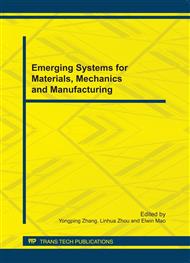p.7
p.12
p.17
p.23
p.28
p.32
p.37
p.42
p.46
The Corrosion Behavior of 304L and 316L Stainless Steel in Food Grade Phosphoric Acid Solutions
Abstract:
The corrosion behavior of 304L and 316L stainless steel have been investigated in 55 °C,85% food grade phosphoric acid solution by weight loss method and dynamic potential scan , the surface morphology was observed by scanning electron microscopy(SEM). The results showed that the number of pits in 304L was much more than that in 316L. The contents of Cr inside pits were greater than that in the smooth surface in the two stainless steels, indicating the Cr-poor are prone to corrosion. All the samples exhibited stable passive behavior which can be seen from the potentiodynamic polarization curves, 316L corrosion potential (-0.201V) was higher than that of 304L the corrosion potential (-0.357V), and under the same circumstance, 316L stainless steel was more corrosion-resistant than 304L stainless steel.
Info:
Periodical:
Pages:
28-31
Citation:
Online since:
October 2011
Authors:
Price:
Сopyright:
© 2012 Trans Tech Publications Ltd. All Rights Reserved
Share:
Citation:


